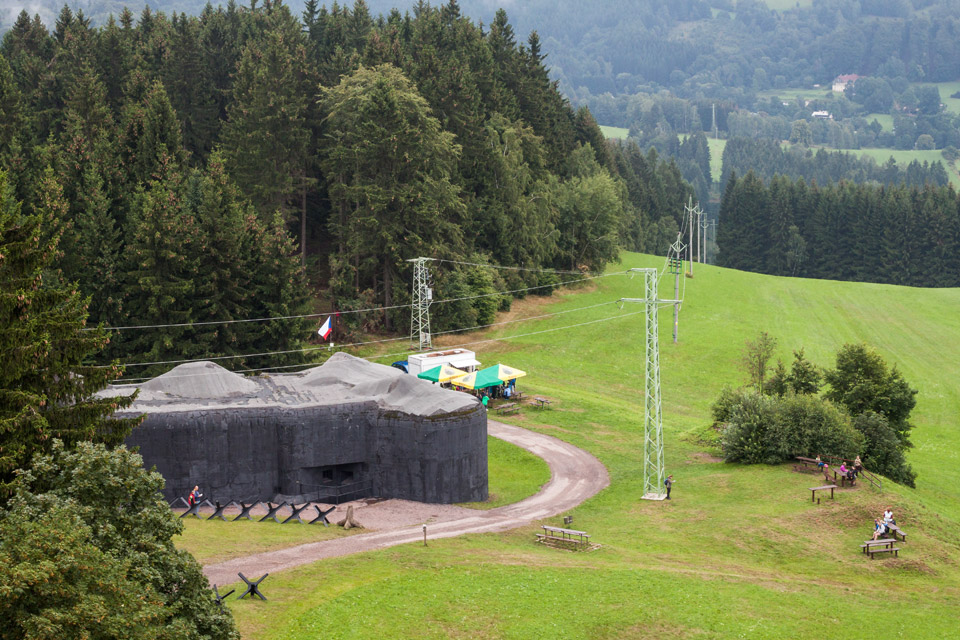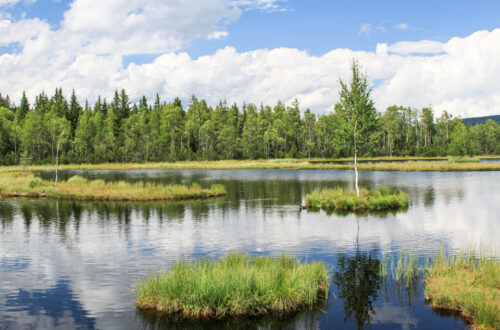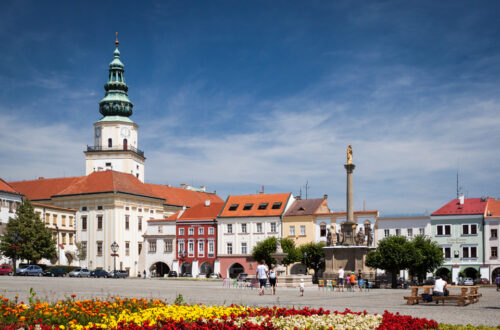Stachelberg fort
I have never been much interested in military history and don’t know much about it but I was quite impressed by the Stachelberg fort my family and I visited in northern Bohemia.
The Stachelberg fort was built as part of border defences against Nazi Germany growing in power, it was supposed to become the largest Czechoslovak artillery fort. The fort consists of 12 objects connected by means of extensive underground, the total length of tunnels and rooms situated 25 to 60 metres underground is approximately 3.5 kilometres.
Construction of the fort started in October 1937 and should have been finished in 2 years but it was stopped prematurely in October 1938 after the Munich Agreement was concluded and the borderland was surrendered to Germany.
In those eleven months of the building, the whole underground of the fort was driven through the bottom layer and small part of concrete was placed (about 7% of the tunnels and an infantry blockhouse).
When the war was over, post-war military usage of the unfinished fort was considered but in the fifties, both the idea and fort were abandoned. During next decades, the only finished object – the infantry blockhouse T-S-73 – was used to store highly toxic chemicals. They were removed in 1990 when the fort was being prepared to be made accessible to the public.
Since 1993, the fort has been operated as a museum. It is owned by the Stachelberg Civic Association whose members work on restoring the fort voluntarily in their free time, the restoration is financed mostly from entrance fees.
Through the infantry blockhouse T-S-73 you can get into the accessible part of the underground. It is a guided tour and while waiting for its beginning, you can have a look at a military-historical exposition presented in the blockhouse and documenting building of Czechoslovak fortifications in the years 1935 – 1938.
The underground, where you arrive after descending many metal steps of the inner staircase, feels impressive. Here all the logistic support should have been provided for 800 soldiers – barracks, base command, magazines, material warehouses, power station etc. As the construction was stopped prematurely, some of the works in progress were preserved, and further expositions of workplaces are built to document the operation. The underground is partly caved in and flooded so it has to be drained to be accessible, unfortunately the original self-drainage system isn’t functional any more.
Not far from the blockhouse, you can also visit an armed pillbox, so called “light object”. It is restored to look how it was prepared for fight during mobilisation in September 1938. Within the guided tour you can enter its insides, see the equipment and feel the limited space. I was most surprised to hear about a hand-operated ventilator as part of the equipment, used to clean the polluted air inside.
By the fort, a system of field fortification was built in summer 1938, part of which you can see in the adjacent woods.
You might have noticed that the opening photo was taken from above. I took it from the observation tower “Eliška” erected inside the fort’s area.
The tower was built in 2014 within the project “Places full of views” of the Czech-Polish Euroregion Glacensis. Its look shall resemble a military watchtower to fit well into the surrounding area.



The name Eliška commemorates the Bohemian and Polish queen, Elizabeth Richeza of Poland, the wife of the king Wenceslaus II. At the time of her life at the beginning of the 14th century, she symbolised Bohemian-Polish alliance which is continued by current cross-border partnerships. You can even find the queen’s wooden statue at the base of the tower with two coats of arms at her feet representing the Bohemian and Polish Kingdom.
We visited the fort on a dreary and rainy day but enjoyed it very much and I would like to come back one day to see the underground one more time. You never know what may impress you…








